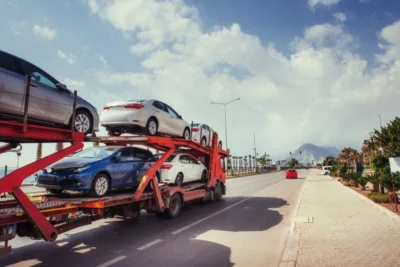Automobile accidents can often leave behind more than just visible dents and scratches. While some vehicle damage is immediately apparent, there are instances where the impact can lead to subtle issues that may not be easily detectable in the aftermath of a collision.
As you might expect, places such as Waxahachie Collision Center see all sorts of different types of damage. Some of this damage is subtle or not immediately obvious.
Recognizing these signs is crucial for ensuring the safety and integrity of your vehicle. In this article, we will explore five signs of vehicle damage that may be hard to detect early after a collision.
Structural Damage
Structural damage is one of the most critical yet challenging issues to identify after a collision. Even seemingly minor accidents can cause misalignments or bend in the vehicle’s frame. This can compromise the structural integrity of your vehicle.
Detecting these issues requires a professional inspection, as the damage may not be visible to the naked eye. Signs of structural damage include uneven gaps between body panels, doors that no longer close properly, or an off-centre steering wheel.
It is not advisable to leave these unaddressed as structural damage can lead to long-term issues such as poor handling, tire wear, and alignment problems.
Suspension Problems
Your car’s suspension system plays a crucial role in ensuring a smooth and controlled ride. Following a collision, the impact can affect various components of the suspension. This could lead to issues that may not be immediately apparent.
Typical signs of suspension problems include a bumpy ride, uneven tire wear, and difficulty steering. If you notice any of these signs, it is essential to have your suspension system inspected by a qualified mechanic to prevent further damage and ensure the continued safety of your vehicle.
Hidden Mechanical Issues
Collisions can result in damage to internal components that may not be obvious or visible. These hidden mechanical issues can manifest over time, causing your vehicle’s performance to deteriorate.
Pay attention to subtle changes in how your vehicle handles, such as strange noises, vibrations, or changes in fuel efficiency. These could be indicative of underlying mechanical problems that require professional attention.
Regular maintenance checks and post-collision inspections are crucial for identifying and addressing hidden mechanical issues early on.
Electrical System Issues
Modern vehicles are equipped with sophisticated electrical systems that control various functions, from engine management to safety features. After a collision, damage to wiring or electronic components may occur, leading to electrical malfunctions.
These issues can be challenging to detect without specialized equipment. Warning signs include flickering lights, malfunctioning sensors, or dashboard warning lights that persist even after repairs.
Ignoring electrical system complications can result in more significant problems down the line, affecting the overall safety and functionality of your vehicle.
Fluid Leaks
Collisions can cause damage to your vehicle’s fluid-carrying systems, such as the radiator, transmission, or brake lines. Fluid leaks may not be immediately noticeable, but they can have serious consequences if left unaddressed.
Keep an eye out for puddles or spots beneath your parked vehicle, and check your fluid levels regularly. Any unexplained fluid loss should prompt a thorough inspection by a qualified mechanic to identify and rectify potential issues.
While some vehicle damage is visible and apparent after a collision, certain issues may lurk beneath the surface. Prompt professional inspections are crucial to identifying and addressing these hidden problems to ensure the long-term safety, performance, and reliability of your vehicle.










